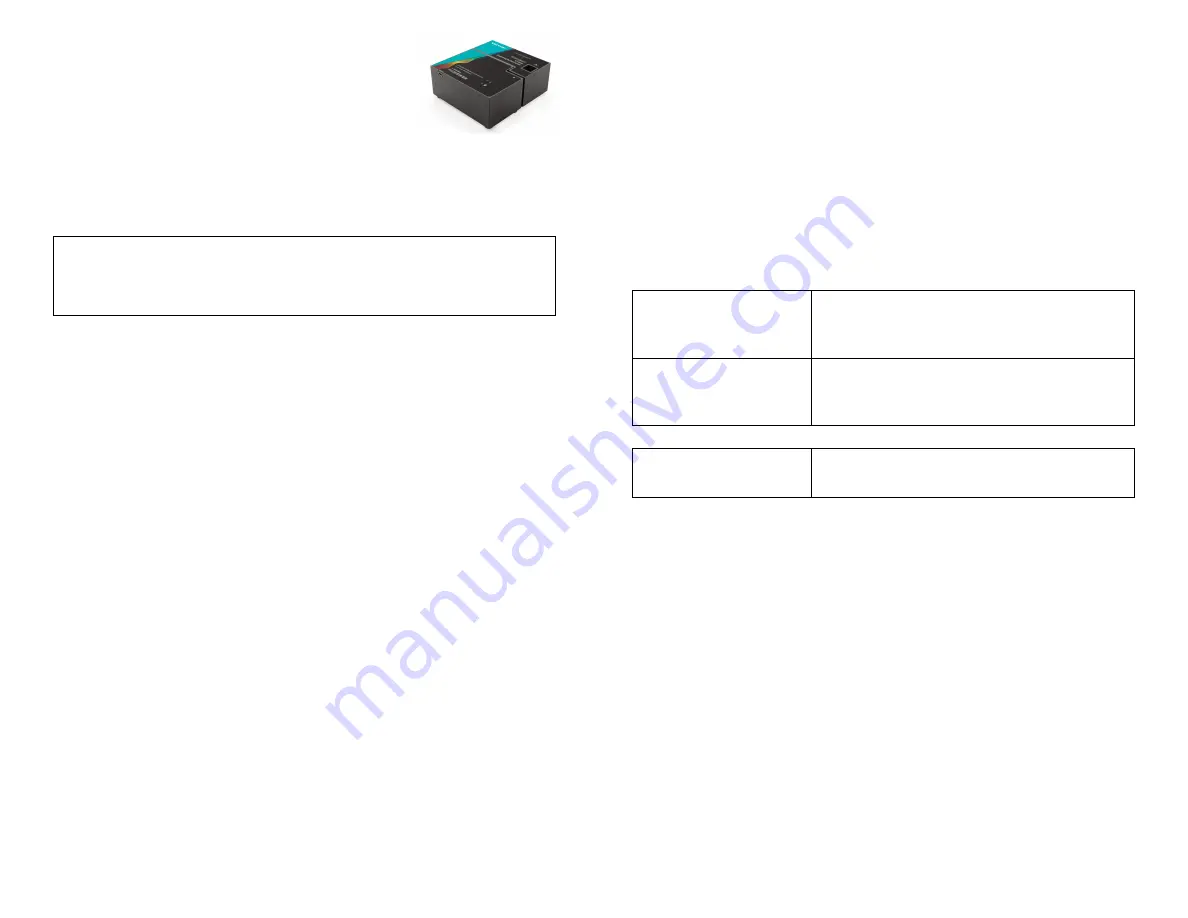
1
Discovered Wireless Devices. Your
spectrometer's ID is located near the
barcode on the label. The Bluetooth
LED on the sensor will now glow
blue (no longer flashing).
5. Click or tap Done to enter data-
collection mode. You are now ready
to continue your experiment.
the original LabQuest. It works via
USB with LabQuest 2 or LabQuest 3.
Connecting the Sensor
See the following link for up-to-date connection information:
www.vernier.com/start/gdx-spec-vis
Connecting via Bluetooth
Ready to connect
Connect the USB to the USB power adapter or to
a powered USB hub. Blue LED next to Bluetooth
icon flashes when sensor is ready to connect.
Connected
Blue LED next to Bluetooth icon is solid when
sensor is connected via Bluetooth wireless tech-
nology.
Connecting via USB
Connected
LED next to Bluetooth icon is off. LED next to
USB icon is solid green.
Using the Product with Spectral Analysis
Connect the sensor following the steps in the Getting Started section of this user
manual.
Select the Type of Data to Measure
The three options for Experiment Types are
1. Measurement
vs.
Wavelength—collect a full spectrum.
2. Measurement
vs.
Concentration—conduct a Beer's law experiment.
3. Measurement
vs.
Time—collect time-based data for a kinetics experiment.
By default, Absorbance is expanded. You can also choose from % Transmittance,
Emissions, or Advanced Full Spectrum. Use the Advanced Full Spectrum mode to
switch among all the measurement types in the same session. For complete
instructions, refer to the Spectral Analysis user manual at
www.vernier.com/spectral-analysis
Measurement
vs.
Wavelength (Full Spectrum)
1. Select Measurement
vs.
Wavelength.
2. If applicable, follow instructions for calibration. Align the cuvette so the clear
side of the cuvette is facing the light source.
Note:
Calibration is not required
for intensity.
Go Direct
®
Visible
Spectrophotometer
(Order Code GDX-SPEC-VIS)
The Go Direct Visible Spectrophotometer is a robust and
accurate portable visible light spectrophotometer that connects easily to your
device via Bluetooth
®
wireless technology or USB to conduct Beer’s law
experiments, kinetic or equilibrium studies of absorbance, or emission spectrum
analysis.
Note:
Vernier products are designed for educational use. Our products are not
designed nor are they recommended for any industrial, medical, or commercial
process such as life support, patient diagnosis, control of a manufacturing
process, or industrial testing of any kind.
What's Included
l
Go Direct Visible Spectrophotometer
l
Plastic cuvettes and lids (15)
l
Mini USB cable
l
USB Power Adapter
Compatible Software and Interfaces
See
www.vernier.com/manuals/gdx-spec-vis
for a list of interfaces and software
compatible with the Go Direct Visible Spectrophotometer.
Getting Started
Please see the following link for platform-specific connection information:
www.vernier.com/start/gdx-spec-vis
Bluetooth Connection
USB Connection
1. Install Vernier Spectral Analysis
®
on
your computer, Chromebook™, or
mobile device. See
www.vernier.com/spectral-analysis
for Spectral Analysis availability.
2. To power the Bluetooth radio,
connect the spectrometer to the USB
Power Adapter or to a powered USB
hub. The Bluetooth
®
LED will blink.
Note
: Do not plug the USB into a
computer USB port to run with
Bluetooth wireless technology.
3. Launch Spectral Analysis.
4. Click or tap Connect a Spectrometer.
Select your Go Direct Visible
Spectrophotometer from the list of
1. Connect the spectrometer to the
USB port.
2. Launch the software. Options
include
l
Computer: Spectral Analysis
l
Chromebook: Spectral Analysis
l
LabQuest 2 or 3: LabQuest App
l
Mobile Device: Spectral Analysis
3. The software will identify the
spectrometer and enter data-
collection mode. You are now
ready to continue your experiment.
Note:
This sensor does not work with





